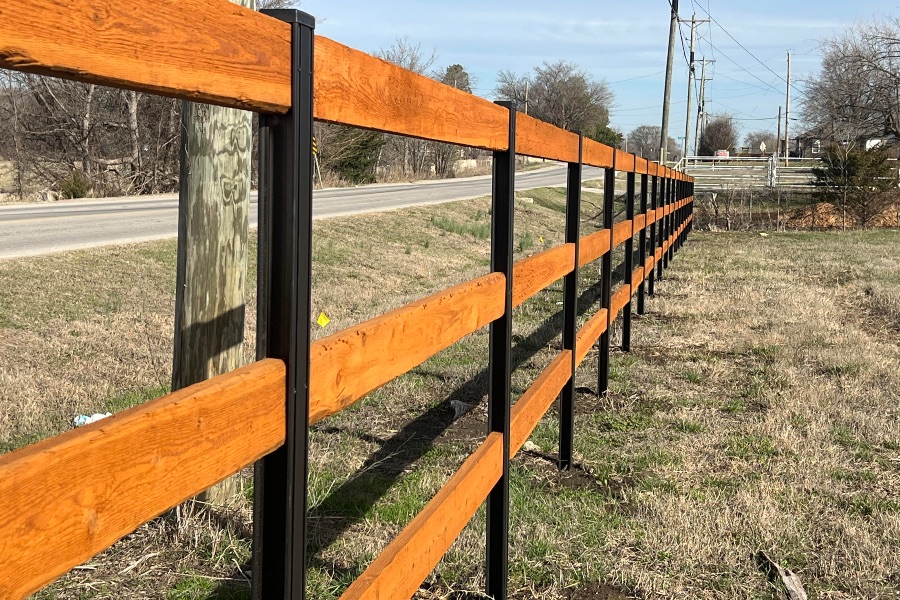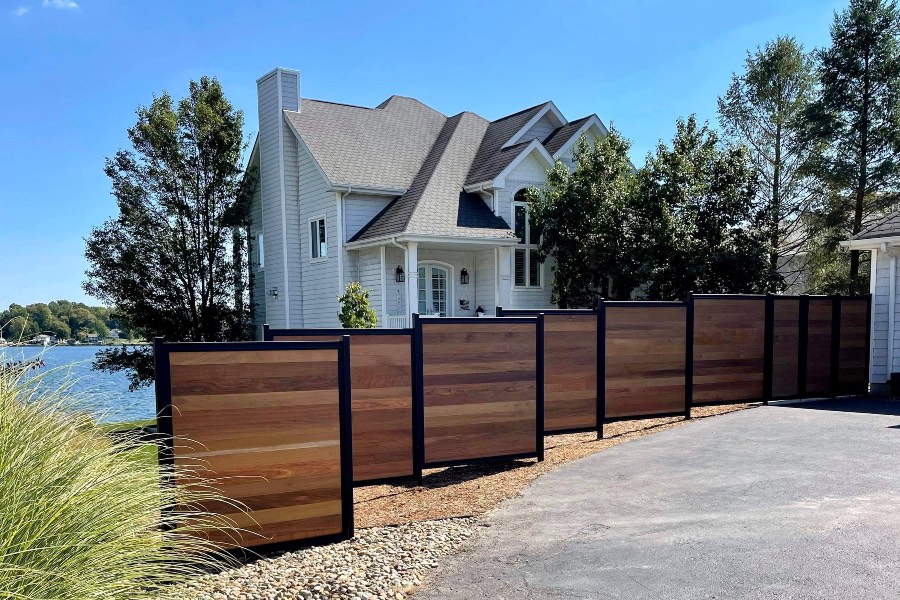All Categories
Featured

As homeowners and companies alike become a lot more environmentally aware, locating eco-friendly and lasting fence materials is an essential consideration. Whether you're wanting to develop a fence for privacy, safety and security, or aesthetic appeal, picking products that reduce your environmental footprint can help shield the planet. In this article, we will explore numerous environment-friendly secure fencing choices, each offering unique benefits for your residential property and the environment.
- Bamboo Secure Fencing: A Renewable Resource. Bamboo is extensively recognized as one of one of the most lasting and green fencing materials readily available today. As a yard instead of a tree, bamboo expands quickly and can reach full maturation in simply 3 to 5 years, making it a very eco-friendly resource.
Ecological Benefits: Bamboo soaks up more carbon dioxide than numerous various other plants, assisting balance out greenhouse gases. In addition, bamboo requires marginal chemicals and plant foods, making it a much healthier alternative for the atmosphere. Toughness: Properly dealt with bamboo is immune to insects and moisture, suggesting it can stand up to the aspects much better than various other wood choices. Visual Charm: Bamboo supplies a clean, modern-day look that works well with numerous landscaping styles, from tropical gardens to modern city designs. While bamboo fencing is sturdy, it does call for appropriate care to maintain its long life, such as regular cleaning and routine sealing.
- Recycled Timber Fencing: Giving New Life to Old Products. Recycled timber is a superb environment-friendly option for those that desire the natural beauty of wood fence without adding to logging. This product is typically sourced from old structures, pallets, or various other repurposed wood items, decreasing the demand for recently collected timber.

Environmental Advantages: Using redeemed wood aids minimize the demand to reduce brand-new trees and can also avoid important products from winding up in garbage dumps. Resilience: Depending upon the kind of wood and treatment it receives, recycled timber fencings can be equally as durable as brand-new timber, especially if kept appropriately with sealers and weatherproofing. Visual Appeal: Recycled wood fencings carry a rustic charm and can be discolored or repainted to fit your personal design. The major consideration with recycled timber is its upkeep. With time, wood can become vulnerable to rot, insect damage, and weathering, so regular upkeep is necessary to expand the life of your fence.
- Metal Fence: Recyclable and resilient. Light weight aluminum and steel fencing, specifically when sourced from recycled products, uses a strong, eco-friendly choice to conventional wood secure fencing. These metals are 100% recyclable, suggesting they can be repurposed forever without losing top quality.

Environmental Benefits: Steels like light weight aluminum and steel minimize the demand for brand-new mining and raw product extraction, both of which have significant ecological impacts. In addition, recycling steels calls for less energy compared to developing brand-new steel from raw materials. Longevity: Metal fencings are extremely solid, immune to weathering, and call for little maintenance compared to timber choices. Aesthetic Appeal: Steel fences can be made in sleek, modern designs, or more conventional looks, providing flexibility for any type of building. While metal fencings are low-maintenance and long lasting, they are not as efficient at providing personal privacy contrasted to timber or plastic choices due to the areas between the slats or bars.
- Living Fences: Natural and Environment-friendly. Living fencings, made from dense bushes, hedges, or trees, give a natural and eco pleasant choice to traditional fence. Not just do they produce a personal privacy obstacle, yet they also add to the setting by supporting wildlife and improving air high quality.
Ecological Advantages: Living fences soak up co2, boost dirt high quality, and offer habitats for birds and various other wildlife. Additionally, they decrease sound pollution and improve air top quality by filtering toxins. Durability: While living fencings need even more maintenance than various other materials (e.g., pruning, watering), they can be incredibly durable if properly kept. Aesthetic Appeal: Living fencings produce a lovely, natural limit that enhances the landscape and provides a distinct and natural look compared to conventional secure fencing alternatives. The essential disadvantage of living fences is that they need continuous maintenance and care, including regular cutting and parasite control.
- Hemp Secure Fencing: Lasting and strong. Hemp is a eco-friendly and fast-growing plant that can be utilized to produce solid, environment-friendly fence. Hemp fence is made from natural hemp fibers, which are resilient, biodegradable, and resistant to pests.
Environmental Benefits: Hemp proliferates and requires little water or pesticides. It likewise assists sequester carbon, decreasing greenhouse gases in the ambience. When the fencing is no more needed, hemp is biodegradable and can be composted. Toughness: Hemp is normally resistant to mold and pests, which assists it endure numerous weather condition problems and prevent the use of harsh chemicals. Sustainability: Hemp farming is less resource-intensive contrasted to other crops and aids preserve dirt wellness through plant rotation. Hemp fencings are a fairly new alternative on the market, and they may not be as widely offered as various other products. In addition, they might not be as commonly used for high-security applications.
Conclusion: Select Eco-Friendly Fence for a Sustainable Future. There are several green fence materials to think about, each offering distinct advantages for your property and the environment. Whether you choose bamboo, recycled timber, metal, living fencings, or hemp, each choice enables you to develop a lovely and practical border while minimizing your environmental footprint. By selecting sustainable materials, you add to a greener future and support the growing movement toward responsible building and construction and landscape design techniques.
Latest Posts
Find Out Why Chicago Drivers Choose Montclare Auto Repair for Reliable Service and Great Savings
Published May 28, 25
1 min read
Specialist Residential Roof Solutions You Can Count On
Published May 23, 25
1 min read
Uncover Cut Costs on Car Maintenance with Montclare Auto Repair’s Exclusive Deals
Published May 22, 25
1 min read
More
Latest Posts
Find Out Why Chicago Drivers Choose Montclare Auto Repair for Reliable Service and Great Savings
Published May 28, 25
1 min read
Specialist Residential Roof Solutions You Can Count On
Published May 23, 25
1 min read
Uncover Cut Costs on Car Maintenance with Montclare Auto Repair’s Exclusive Deals
Published May 22, 25
1 min read